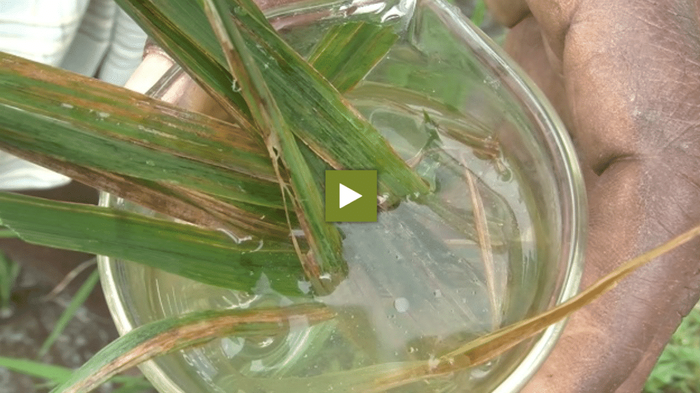Bacterial leaf blight can destroy up to half of your harvest. Therefore it is important to know how to prevent the disease.
Bacterial leaf blight appears often in the early season and spreads over seeds, wounds, rain splash and irrigation water. When you apply the same variety every year, the disease could have a serious outbreak. It also appears in weeds and crop stubble and can attack your harvest crop from there.
Bacterial leaf blight
The disease affects rice plants in the nursery and the main field crop. You can recognize it, because the tip of the rice leaves gets dry. Then bacterial leaf blight spreads downwards over the edges of the leaves. It appears in a wavy structure. At the end it dries out your plant.
When you want to check if your plants have the disease, you can cut some sick leaves and put them in a cup, filled with water. If the leaves give off an oily brown fluid, which results from the bacteria, you know that your plants are affected. This doesn‘t mean that all of your plants are going to be sick, but the disease can destroy about half of the yield. From a distance you can see better, how many plants are actually affected.
Disease management
To control the disease use seeds that are healthy and resistant against bacterial leaf blight. You should always remove weeds and crop rests from your fields and compost them.
Later in the season you shouldn‘t chop off the destroyed leaves, because then the disease can easily spread. Micro nutrients like zinc and copper help to build up the plant and make it more resistant.
As soon as you recognize dry leaves, you should mix 40 kg of fresh cow dung with 100 l of water for half a hectare. Let it sit for 24 hours. Then stir the dung and filter it with a gunny bag. Afterwards you can add another 100 l of water. Spray the mixture for 15 days every day three times.
You can also use 1 kg of Pesudomonas-talc from a shop with 200 l of water for half a hectare. Apply this mixture 15 days after transplanting. 10 days later you add another spray and a third spray another 10 days after.



















